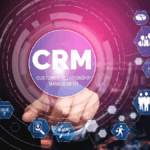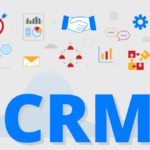Adopting a new Customer Relationship Management (CRM) system can revolutionize the way your business manages customer interactions, sales, and marketing efforts. However, the true potential of a CRM system is only realized when your team is properly trained to use it effectively.
Training your team on a new CRM system is not just about software tutorials—it’s about change management, user adoption, and long-term success. In this guide, we’ll walk you through everything you need to know to ensure a smooth CRM training process for your team.
Why CRM Training Is Crucial for Your Business
The High Cost of Poor CRM Adoption
Businesses invest heavily in CRM systems expecting improved efficiency, but many fail due to poor user adoption. Without proper training:
- Employees revert to old habits or tools
- Data becomes inconsistent or incomplete
- Customer experience suffers
- ROI on CRM investment declines
The Benefits of Effective CRM Training
- Boosts productivity by teaching employees time-saving features
- Improves customer satisfaction through better service and follow-up
- Enhances team collaboration with centralized, accessible data
- Encourages adoption and reduces frustration
- Ensures consistency in data entry, communication, and reporting
Preparing for CRM Training
1. Identify Your Team’s Learning Needs
Before launching any training program, assess the skill levels, roles, and daily responsibilities of your team members. A sales rep may need training on contact management and pipeline tracking, while a marketer may focus on campaign automation and segmentation.
2. Set Clear Goals for CRM Training
Align training with business objectives. Ask:
- What problems is the new CRM solving?
- What tasks should users master?
- What behavior changes do we expect?
Clear goals guide both the training structure and performance tracking.
3. Involve Stakeholders Early
Involve department heads, team leads, and CRM champions early in the rollout process. Their support is key for successful training and user adoption.
Designing an Effective CRM Training Program
1. Choose the Right Training Format
Different people learn in different ways. Use a mix of formats such as:
- Live workshops: In-person or virtual sessions with instructors
- Video tutorials: Pre-recorded demos for on-demand access
- Interactive simulations: Click-through practice environments
- Written guides and manuals: For step-by-step instructions
- Peer mentoring: Pair new users with experienced team members
2. Tailor Training by Role
Avoid a one-size-fits-all approach. Customize training modules for:
- Sales Teams: Managing leads, tracking deals, using pipelines
- Marketing Teams: Email automation, segmentation, analytics
- Customer Support: Ticketing systems, chat integrations, customer history
- Managers: Reporting, performance dashboards, analytics
3. Set Up a CRM Sandbox for Practice
A sandbox environment allows users to practice without fear of making mistakes. This builds confidence and encourages exploration of features.
4. Focus on Real-Life Scenarios
Use practical, role-specific examples to make training relevant. Demonstrate how the CRM helps them in their daily tasks, such as:
- Following up with a lead
- Creating a campaign
- Logging a customer issue
- Generating performance reports
Training Timeline and Rollout Plan
Step 1: Pre-Training Communication
Send out an internal announcement to explain:
- Why the company is switching CRMs
- What benefits it brings
- What to expect from training
- Who to contact for support
Step 2: Initial Training Sessions
Launch foundational training in small groups or departments. Include:
- CRM overview and navigation
- Key features by team role
- Best practices for data entry and communication
Step 3: Follow-Up Workshops
Schedule deep-dive sessions after the initial rollout to focus on:
- Advanced reporting
- Workflow automation
- CRM integrations with other tools (email, calendars, etc.)
Step 4: Ongoing Support and Learning
Training doesn’t stop after the launch. Provide:
- Monthly refresher sessions
- Access to on-demand tutorials
- Dedicated CRM champions or support team
- A shared FAQ or knowledge base
Ensuring CRM User Adoption
1. Appoint CRM Champions
Identify tech-savvy, enthusiastic employees to serve as CRM ambassadors. They can:
- Help peers with questions
- Provide feedback to the CRM admin team
- Encourage positive attitudes toward the system
2. Use Gamification and Incentives
Motivate users to engage with the new CRM through:
- Leaderboards
- Badges for milestones (e.g., first lead closed via CRM)
- Small rewards for full profile completion, timely updates, etc.
3. Monitor Usage and Provide Feedback
Track CRM usage metrics like:
- Login frequency
- Data entry completeness
- Sales pipeline updates
- Task completion rates
Use this data to identify who needs additional training or support.
4. Celebrate Successes
Showcase wins, such as deals closed through CRM or improved customer satisfaction scores. This reinforces the value of the system and boosts morale.
Common CRM Training Mistakes to Avoid
- Skipping role-based training: Not all users need to learn every feature
- Information overload: Avoid dumping too much info in one session
- Neglecting follow-up: Users may forget or develop bad habits without reinforcement
- Lack of leadership buy-in: Managers should lead by example and encourage adoption
- Not addressing resistance: Acknowledge concerns and offer solutions
Post-Training Evaluation and Feedback
Conduct Surveys and Interviews
After training, gather feedback to understand:
- What worked and what didn’t
- Which features users still struggle with
- Suggestions for improvement
Track KPIs Related to CRM Usage
Measure performance improvements by analyzing:
- Sales conversion rates
- Lead response times
- Task and activity completion
- Customer feedback scores
These metrics indicate the training’s effectiveness and highlight areas for enhancement.
Conclusion
Training your team on a new CRM system is not just about introducing a new tool—it’s about enabling change, building confidence, and driving business growth. A thoughtful, well-executed training plan ensures your team can fully embrace the new system and maximize its benefits.
By tailoring training by role, using real-life examples, offering ongoing support, and involving leadership, you’ll ensure that your CRM investment delivers a strong return. Remember, the success of a CRM is only as strong as the people using it.
FAQs
1. How long does it take to train a team on a new CRM system?
Training typically takes a few days to a couple of weeks, depending on the CRM’s complexity and the team’s familiarity with similar tools. Ongoing learning and support should continue post-launch.
2. What is the best way to train a team on CRM?
The best approach combines hands-on sessions, video tutorials, written guides, and role-based modules. Providing practice environments and real-time support is also key.
3. Should we hire external CRM trainers?
External trainers can be beneficial, especially for large teams or complex CRMs. They bring expertise and can create tailored training sessions. However, internal champions can also effectively lead the process.
4. What tools can help with CRM training?
Tools like LMS platforms, screen recording software, interactive walkthrough tools (e.g., WalkMe, Whatfix), and internal knowledge bases support CRM training and adoption.
5. What if some employees resist using the new CRM?
Address resistance by explaining the benefits, involving them in the process, offering support, and recognizing small wins. Appointing peer mentors and leaders can also ease the transition.









